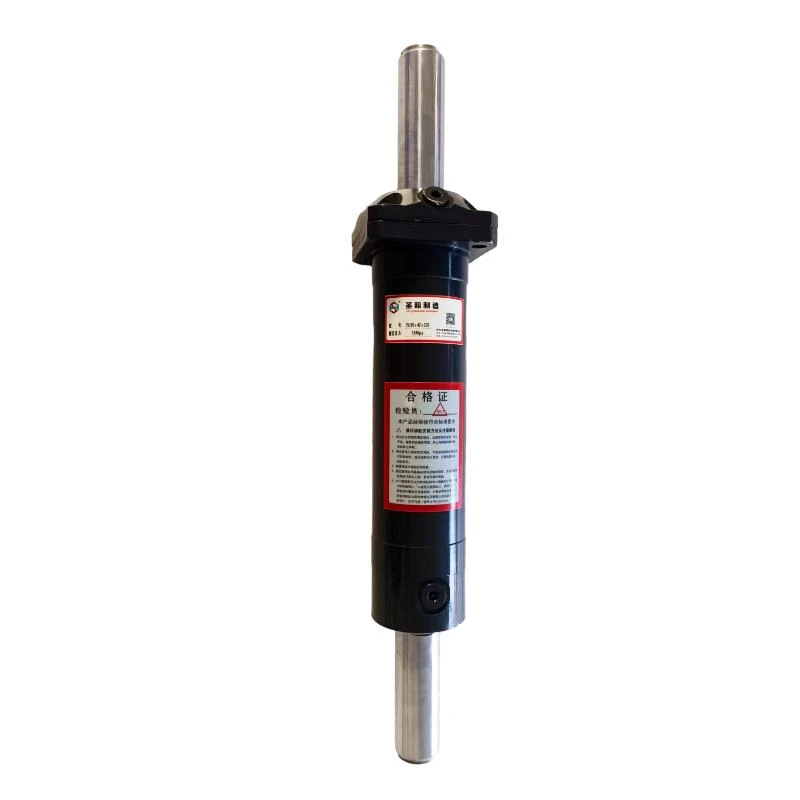ធ្នូ . 18, 2024 00:42 Back to list
large hydraulic cylinder products
Understanding Large Hydraulic Cylinder Products
Hydraulic cylinders are fundamental components in various machinery and applications, providing mechanical force through hydraulic fluid pressure. Among these, large hydraulic cylinders are particularly significant due to their power, versatility, and range of applications. This article will delve into the definition, construction, applications, and maintenance of large hydraulic cylinder products.
What are Large Hydraulic Cylinders?
Large hydraulic cylinders are devices that convert hydraulic energy into mechanical energy, typically used in equipment requiring heavy lifting, pushing, or pulling forces. These cylinders are characterized by their bore diameter and stroke length, which are considerably larger than standard hydraulic cylinders. They are engineered to handle high pressures, making them essential in industries such as construction, mining, marine, and manufacturing.
Construction of Large Hydraulic Cylinders
The construction of large hydraulic cylinders involves several critical components
1. Cylinder Barrel The barrel houses the piston and is typically made from high-strength steel. It must resist the internal pressure exerted by the hydraulic fluid, making it robust and durable.
2. Piston The piston is the moving part within the cylinder, driven by hydraulic fluid. It creates the force that moves the attached equipment. The design of the piston is crucial for efficient fluid flow and force generation.
3. End Caps These are attached to either end of the cylinder barrel and are responsible for sealing the hydraulic fluid. They must withstand substantial pressure and are often bolted or welded in place.
4. Rod The rod is connected to the piston and extends outside the cylinder, transmitting the generated force to the attached load. It is typically chrome-plated to reduce wear and protect against corrosion.
5. Seals and Packing Seals are vital for preventing leakage of hydraulic fluid, which can compromise the cylinder's efficiency and safety. High-quality seals are used to ensure longevity and reliable performance.
6. Ports Hydraulic fluid enters and exits the cylinder through ports. Proper design and placement of these ports facilitate smooth operation and efficient force transfer.
Applications of Large Hydraulic Cylinders
The applications of large hydraulic cylinders are diverse and critical across various sectors
large hydraulic cylinder products

1. Construction These cylinders power heavy machinery such as excavators, bulldozers, and cranes, enabling them to perform tasks that require tremendous force, such as lifting heavy loads or digging.
2. Mining In mining operations, large hydraulic cylinders are used in drilling rigs and haul trucks, providing the necessary force for digging and transporting materials.
3. Marine Shipbuilding and offshore drilling often utilize large hydraulic cylinders for anchoring, lifting, and marine construction tasks, enhancing their operational efficiency.
4. Manufacturing Hydraulic presses, which rely on large hydraulic cylinders, are commonly used in manufacturing processes for shaping, forming, and assembling materials.
5. Transportation Large hydraulic cylinders are integral in the operation of vehicles such as garbage trucks and container handlers, facilitating easy lifting and lowering of loads.
Maintenance of Large Hydraulic Cylinders
Proper maintenance of large hydraulic cylinders is crucial to ensure their longevity and performance
1. Regular Inspection Conduct visual inspections for signs of leaks, wear, and damage. Pay special attention to seals and connections.
2. Fluid Changes Regularly change hydraulic fluid to prevent contamination, which can lead to malfunction and reduced efficiency.
3. Seal Replacement Seals wear over time and should be replaced promptly to prevent leaks and maintain pressure.
4. Lubrication Ensure that moving components, such as rods and pistons, are adequately lubricated to minimize friction and wear.
5. Pressure Testing Conduct periodic pressure tests to confirm that the cylinder can operate safely under expected loads.
Conclusion
Large hydraulic cylinders are indispensable in various industries due to their capacity to generate significant force through hydraulic power. Understanding their construction, applications, and maintenance is essential for ensuring their reliability and longevity. As technology advances, large hydraulic cylinder products continue to evolve, making them even more efficient and integrated into modern machinery, ultimately contributing to industrial productivity.
-
Fork Lift Power Units - Hebei Shenghan | Efficiency, Reliability
NewsJul.13,2025
-
1.5-Ton Turbocharged Cylinder-Hebei Shenghan|Hydraulic Solution,Energy Efficiency
NewsJul.13,2025
-
Auto Hoist Power Units-Hebei Shenghan|Efficiency&Industrial Lifting
NewsJul.13,2025
-
Double Acting Power Units-Hebei Shenghan|Hydraulic Solutions,Industrial Efficiency
NewsJul.13,2025
-
1.5 Ton Lifting Cylinder 70/82-40-290-535 - High-Performance Hydraulic Solution | Hebei Shenghan
NewsJul.13,2025
-
Fork Lift Power Units - Hebei Shenghan | Efficiency&Reliability
NewsJul.13,2025
